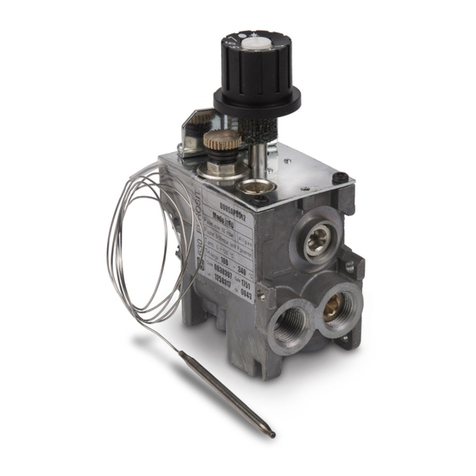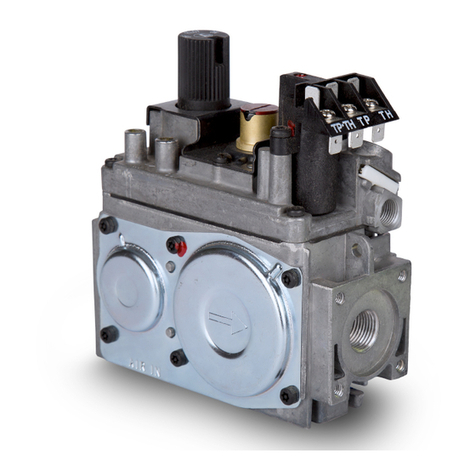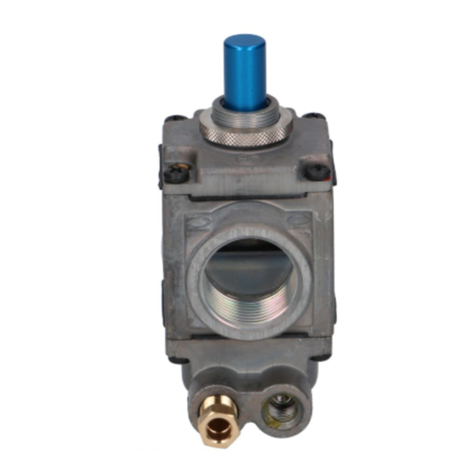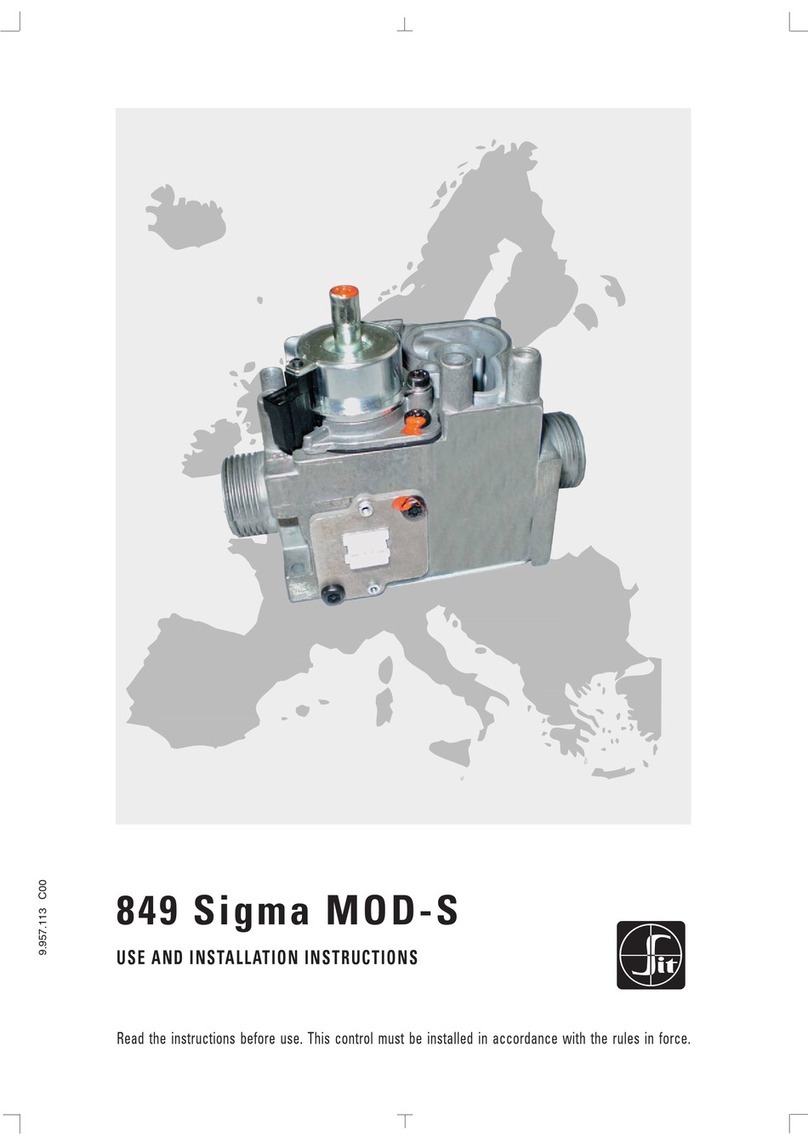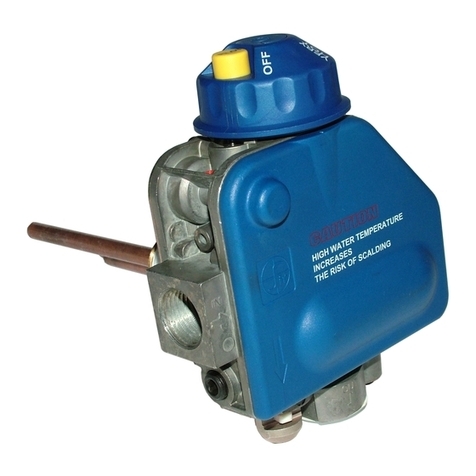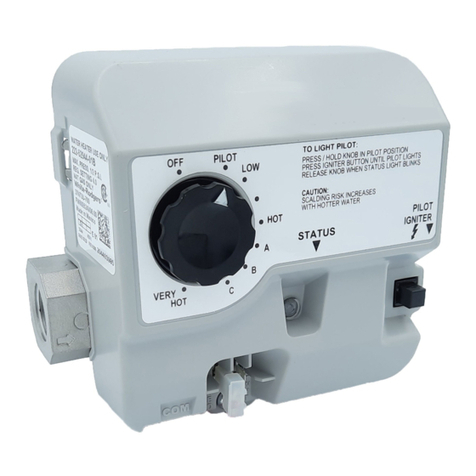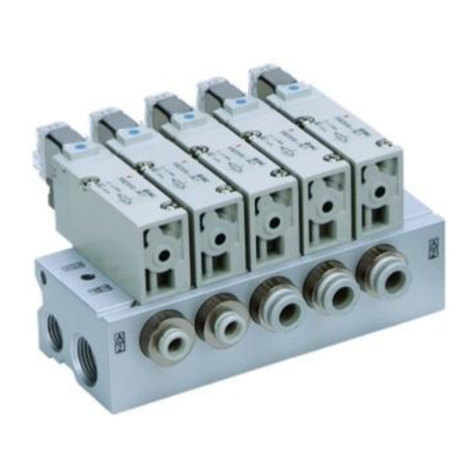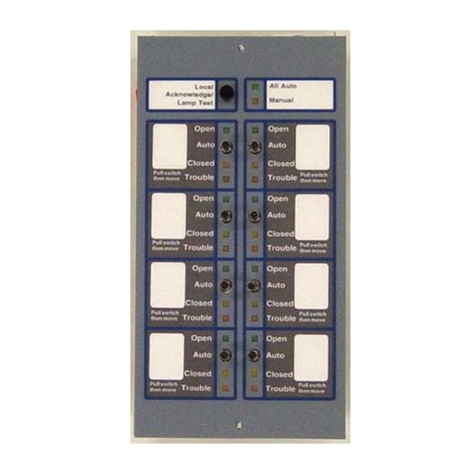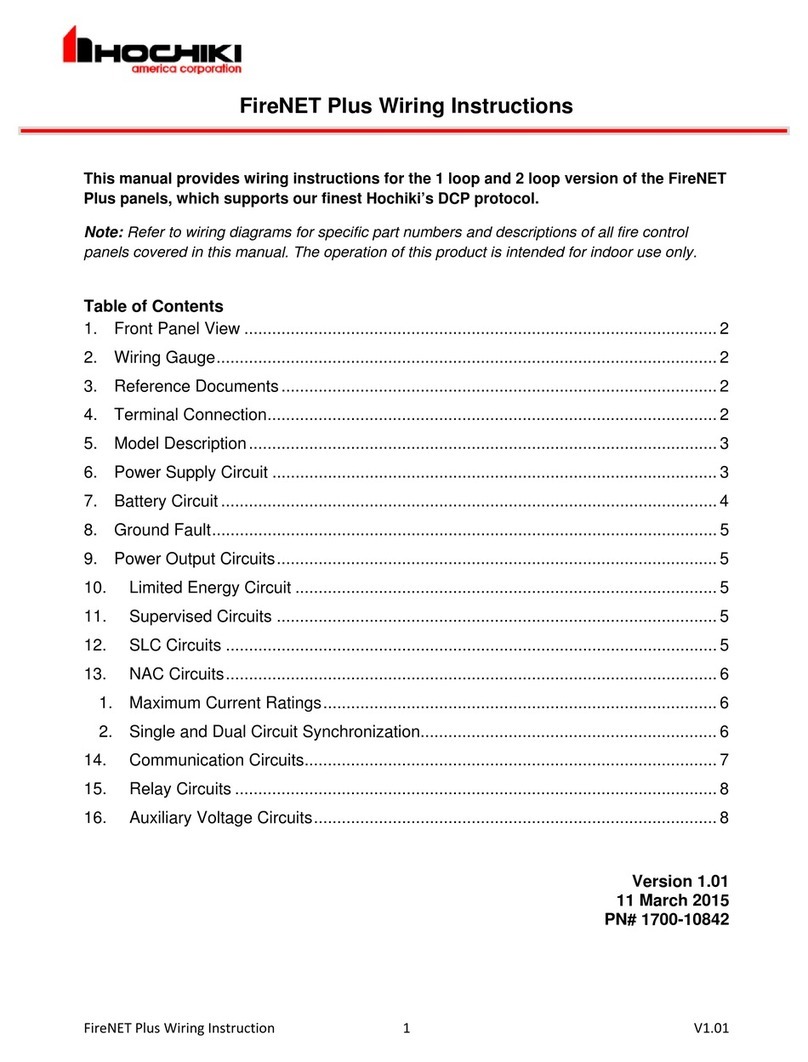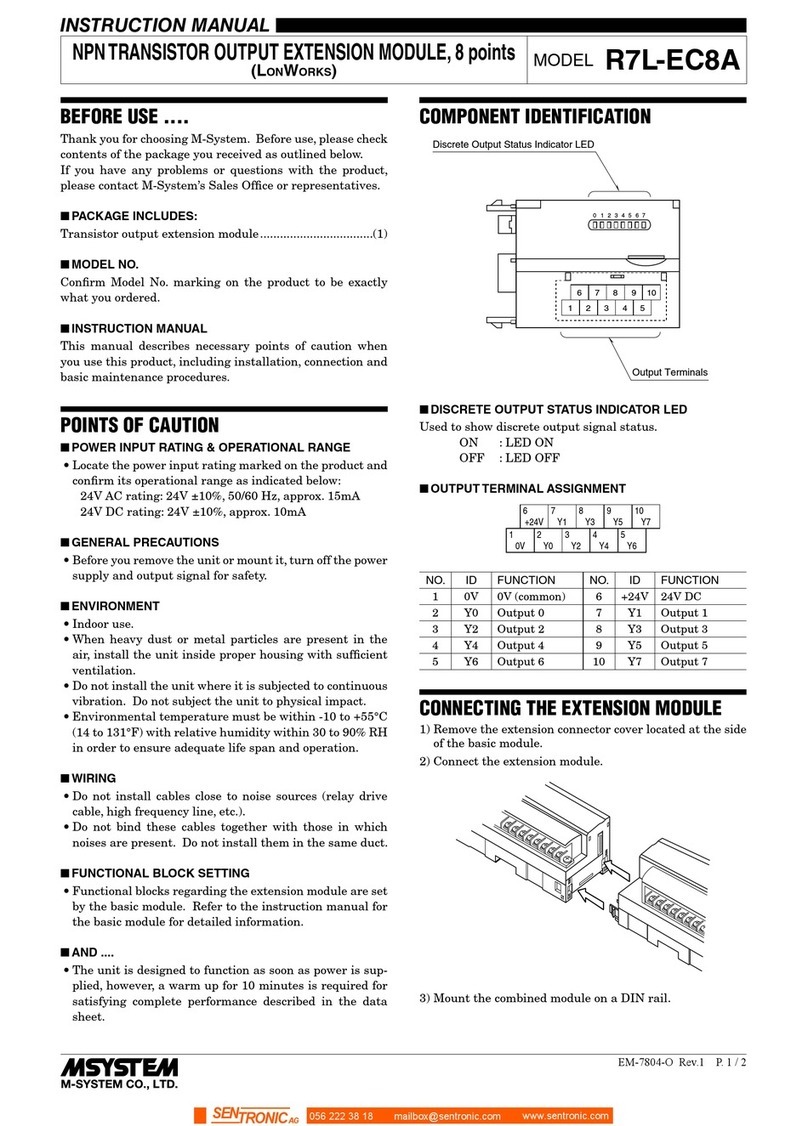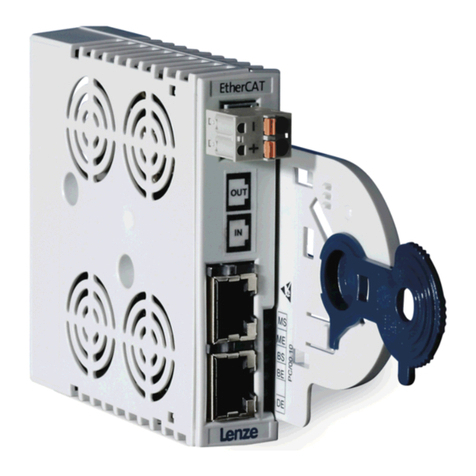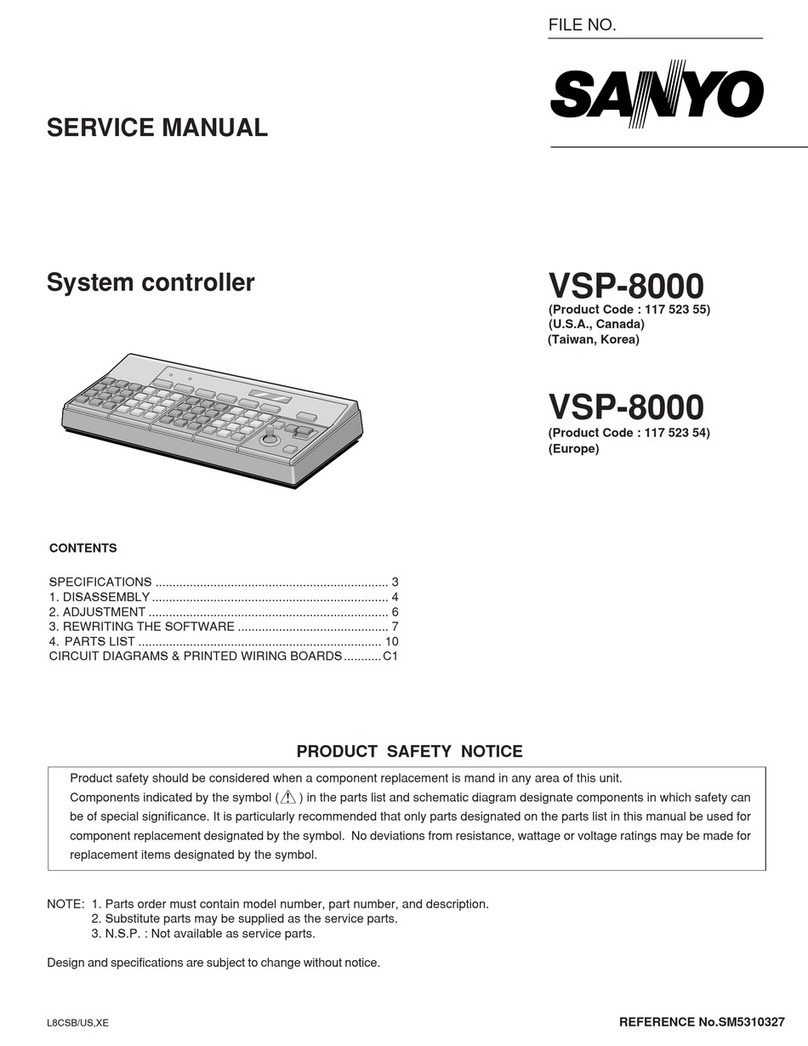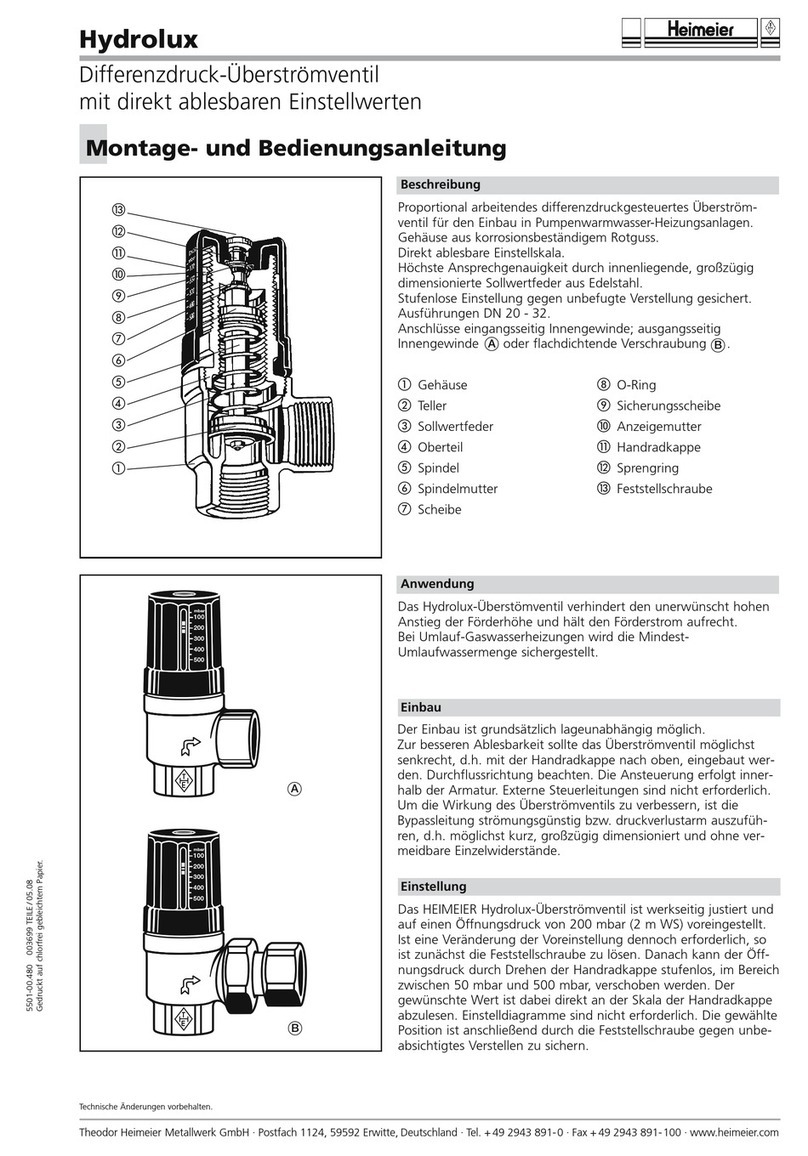Sit PROFLAME 880 Technical manual

880 PROFLAME
USE AND INSTALLATION INSTRUCTIONS
Read the instructions before use. This control must be installed in accordance with the rules in force.
9.957.018 02

USE AND INSTALLATION INSTRUCTIONS
880 consists of two automatic shut-off valves and a servo pressure regulator in series in the main gas
path.
With reference to the schematic block in Fig. 1:
•
FLI is the inlet filter.
•
EV1 is the first automatic shut-off valve.
•
EV2 is the second automatic shut-off valve.
•
RP is a pressure regulator.
•
FLO is the outlet filter (on request).
•
PA is the pilot adjustment screw.
•
FLP is the pilot filter.
GAS
INLET
FLI
EV1
RP
EV2
MAIN
BURNER
PILOT
BURNER
FLP
FLO
MD
PA
GAS
INLET
FLI
EV1
RP
EV2
MAIN
BURNER
PILO
T
BURNER
FLP
FLO
PA
Fig. 1: 880 schematic blocks.
TECHNICAL DATA
Gas inlet and outlet connections 3/8”- 18 NPT ANSI B 1.20.1
Pilot outlet 7/16“- 24 UNS - 2B ANSI
Installation position Upright, LTD horizontal (Never Upside down)
Gas families Natural gas NG ,LPG
Maximum gas inlet pressure 1/2 PSI
2
NORMATIVE REFERENCE
ANSI Z21.78
CSA 6.20

USE AND INSTALLATION INSTRUCTIONS
3
1
ON-OFF solenoid EV1 terminal
2
ON-OFF solenoid EV2 terminal
3
Inlet pressure test point
4
Outlet pressure test point
5
Pressure regulator adjusting screw
6
Pilot adjusting screw
7
Pilot outlet
8
Gas inlet with protective seal
9
Gas outlet with protective seal
10
Ground connection
11
Mounting dead holes
12
Mounting through holes
VALVE DESCRIPTION
•
Aluminium alloy body
•
In-line inlet and outlet
•
Pilot outlet
•
Inlet filter
•
Inlet pressure test point
•
Outlet pressure test point
•
Two mounting through holes on the side
•
Two mounting dead holes on the gas inlet and outlet
MAIN FEATURES
12
10
6
8
11
11
4
3
5
7
9
12
12
11
11

USE AND INSTALLATION INSTRUCTIONS
4
INSTALLATION
When installation of this product begins…
1. Read all of these instructions carefully. Failure to follow these instructions could damage the
product or cause a dangerous condition.
2. Check the ratings given in the instructions and on the appliance to make certain that the control
is suitable for your application.
3. All operations of installation, calibration, conversion and regulation must be undertaken
exclusively by a qualified and certified Gas Appliance Service Technician following the
instruction specified in this catalog and those in the instruction manual of the appliance in which
the valve is installed.
4. After installation is complete, verify that the appliance is operating as indicated in these
instructions.
STOP
Do not install, replace, or in any way modify the gas valve or the appliance, unless
CERTIFIED and QUALIFIED as a Gas Appliance Service Technician on the appliance this
valve is used on. READ AND FOLLOW ALL INSTRUCTIONS.
CAPACITY
880- Power test gas A [Kbtu/h, d=0.64, Hi=37.3 Mj/m3]-Pinlet=3,5["w.c.]-d pil = 0.3mm
0
10
20
30
40
50
60
70
80
90
100
110
120
0 0.5 1 1.5 2 2.5 3
∆P ["w.c.]
P [kbtu/h]
FLOW RATE Q AS A FUNCTION OF PRESSURE DROP P
OPERATION
880 Proflame has two automatic shut-off valves. When both of them are de-energised, it is only
possible to measure the inlet pressure on the inlet pressure test point.
When the solenoid EV1 is energised the first gas valve opens. The pilot outlet is enabled.
Energising the second solenoid EV2, the second valve also opens and the gas flows through the
main outlet.
It is possible to measure the outlet pressure on the outlet pressure test point.
The servo pressure regulator diaphragm system allows improved performance of outlet pressure
regulation. The outlet pressure can be adjusted by a screw.

USE AND INSTALLATION INSTRUCTIONS
5
WARNING
Oxygen Depletion Hazard. Can cause injury or death by asphyxiation.
Do not use valves for vented appliances on unvented or vent free appliances. Do not use
valves for unvented or vent free appliances on vented appliances.
WARNING
Fire or Explosion Hazard. Can cause property damage, severe injury or death.
Follow these instructions completely.
1. Turn off gas supply at the appliance service valve before installation, and perform a Gas
Leak Test after the installation is completed.
2. Always install the sediment trap in the gas supply line to prevent contamination of the gas
control.
CAUTION
Electrical shock or equipment damage hazard.
Can shock individuals or short equipment circuitry.
Make sure to disconnect all electrical supplies before beginning the installation process.
IMPORTANT
•
These gas controls are shipped with anti-contamination seals over inlets and outlets.
•
Do not remove the seals until ready for connection to piping.
•
Appliance manufacturer’s instructions supercede any instructions listed in this instruction book.
WARNING
DO NOT SUBJECT THE VALVE TO BENDING IN EXCESS OF 310 LBF IN
AND TORQUE IN EXCESS OF 220 LBF IN
General recommendations
• Do not tamper with sealed parts
• Do not slacken assembly screws
• Do not remove labels
• Avoid blows (knocks, falls etc.)
• Only remove dust caps when installing
• Do not exceed recommended torque
• Ensure that the gas flows in the direction
shown by the arrow on the valve body
WARNING
IF A SINGLE VALVE FALLS, DO NOT USE FOR PERFORMANCE AND
SAFETY REASONS
WARNING
DO NOT TORQUE OR BEND
THE EV1 AND EV2 MALE
TERMINALS BEFORE, DURING
AND AFTER THE WIRING
CONNECTION OPERATION
TO AVOID THE RISK OF
BREAKING THE EV1 AND THE
EV2 MALE TERMINALS, SEE
PICTURE ON THE RIGHT.
EV1 EV2
EARTH
• Use only the specified spanner grips when making
the connections (see Fig. 3)
• Do not push on the side covers of the valve
• Do not immerse in water or subject the multifunctional
gas control to temperatures exceeding 70°C
• Turn off gas supply before starting installation.

USE AND INSTALLATION INSTRUCTIONS
INSTALL PIPING TO GAS VALVE
All piping must comply with local codes and ordinances or with the National Fuel Gas code (ANSI
Z223.1 NFPA No. 54) whichever applies. Tubing installation must comply with approved standards
and practices. Use appropriately sized fittings when
connecting aluminum tubing to the pilot outlet.
1. Use new, clean and correctly reamed pipe free from
burrs, chips, debris and any foreign matter. When
tubing is used, make sure the ends are square
and clean. All tubing bends must be smooth and
without deformation.
2. Run pipe or tubing to the valve. If tubing is used,
obtain a tube-to-pipe coupling to connect the tubing to the valve.
3. Install sediment trap (Drip Leg) in the supply line to the gas valve.
INSTALLING THE VALVE
1. Mount the valve in the desired position (NEVER UPSIDE DOWN).
2. Mount the valve so the flow of gas is consistent with the gas flow arrows on the valve.
3. Apply a moderate amount of quality pipe compound (DO NOT USE TEFLON TAPE)
to the pipe only, leaving two end threads bare. On LP installations, use compound that
resists exposure to LP gas.
4. Remove seals over inlet and outlets if necessary.
5. Connect pipe to valve inlet and outlet. Place a 1” 1/16 wrench on valve as shown in Fig. 3.
6. Thread pipe into the valve until a gas tight seal is achieved. Typically, for NPT thread,
penetration is usually no more than the diameter of the pipe or 2 and 1/4 turns thread. Valve
distortion or mechanical failure can result if the pipe is inserted too deeply.
7. Connect pilot tubing to valve with appropriately sized fittings as shown in Fig. 4.
8. Confirm gas tight seals with gas leak test.
3” MIN.
GAS SUPPLY
TO CONTROL
INLET
DRIP LEG (DOWN)
6
WARNING
THE MOUNTING DEAD HOLES DEPTH IS SHOWN IN FIG. 2. MAKE SURE
TO USE SCREWS OF APPROPRIATE LENGHT. THE SCREWS MUST NOT
PUSH THE BOTTOM OF THE MOUNTING HOLES.
Fig. 2
SECTION OF THE MOUNTING HOLES
7.5 [0.295] MIN
Ø 3.6 [Ø 0.142] (N° 4)
MOUNTING HOLES
SECTION OF THE MOUNTING HOLES
7.5 [0.295] MIN
Ø 3.6 [Ø 0.142] (N° 4)
MOUNTING HOLES
SECTION OF THE MOUNTING HOLES
7.5 [0.295] MIN
Ø 3.6 [Ø 0.142] (N° 4)
MOUNTING HOLES
Dimensions are in millimeters. Dimensions between [...] are in inches

USE AND INSTALLATION INSTRUCTIONS
7
PERFORM GAS LEAK TEST
GAS LEAK TEST
•
Using a solution of soapy water, paint the piping connections, which are upstream of the
control. The presence of bubbles indicates a gas leak.
If a leak is detected, tighten the pipe connections and repeat leak test.
•
Light the main burner.
•
With the main burner in operation, paint all piping connections from the valve with a soap and
water solution.
•
If another leak is detected, tighten the connection.
•
If after tightening the connections the leak is still present, replace the leaky part or valve. Shut
off the main gas supply before attempting replacement of parts or the valve.
•
Using the soap and water solution, test the pressure test ports to verify that no leak is present.
•
If a leak is detected, tighten the screw and retest.
•
If after tightening the pressure test port screw and the leak is still present, shut off main gas
supply, then replace the valve.
WARNING:
Fire or Explosion hazard.
Can cause damage to property and severe injury or death.
The appliance where this combination gas control is installed, does not have a permanent
pilot. It is equipped with an ignition device which automatically light the burner.
•
Do not try to light the burner by hand.
•
The appliance can turn on suddenly. Keep away from the main burner.
WARNING:
Stand away from the main burner while lighting.
Hidden gas leaks can cause flashbacks in the appliance area. Check for gas leaks with rich
soap and water solution any time work is done on a gas system.
FINAL CHECKS
MAINTENANCE
This valve is not field serviceable. There are no replaceable parts. Do not disassemble, or
attempt replacement of any parts on or in the valve. Improper adjustment or tampering with
settings can result in severe injury or death.
Fig. 4
Fig. 3

Table of contents
Other Sit Control Unit manuals
Popular Control Unit manuals by other brands
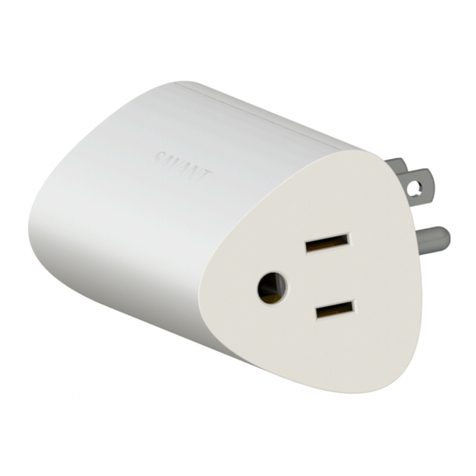
Savant
Savant SAV-LMP-0300 Quick reference guide
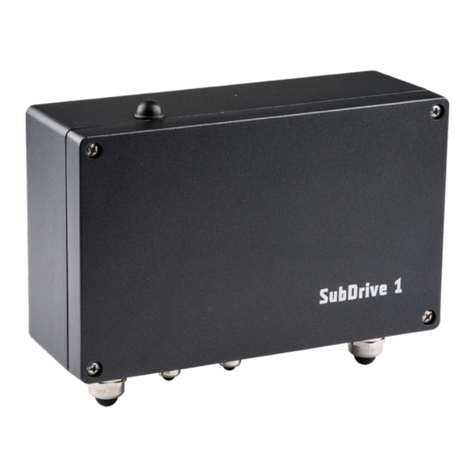
Robe
Robe ANOLiS SubDrive 1 user manual

Solar Frontier
Solar Frontier SF145 - 170 - S installation instructions
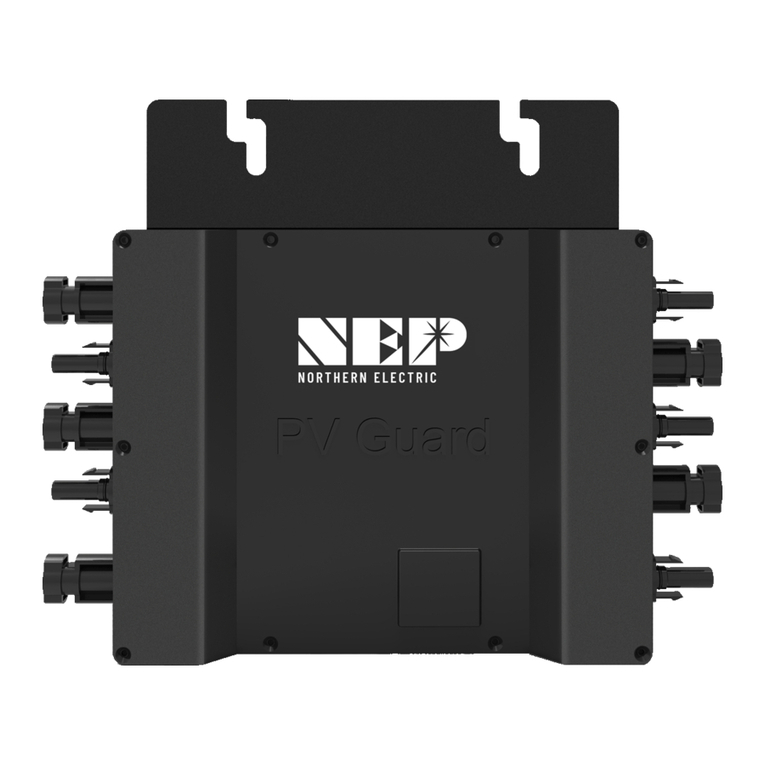
NEP
NEP PVG-4 Installation and operation manual
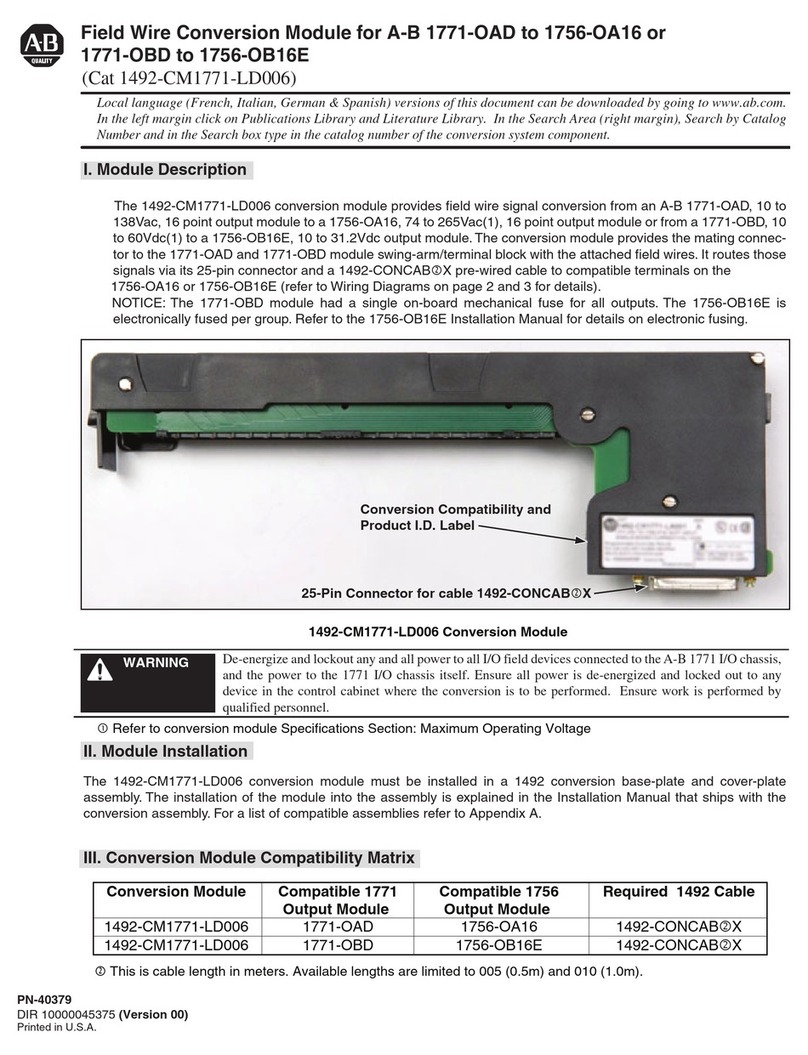
Allen-Bradley
Allen-Bradley 1492-CM1771-LD006 installation manual
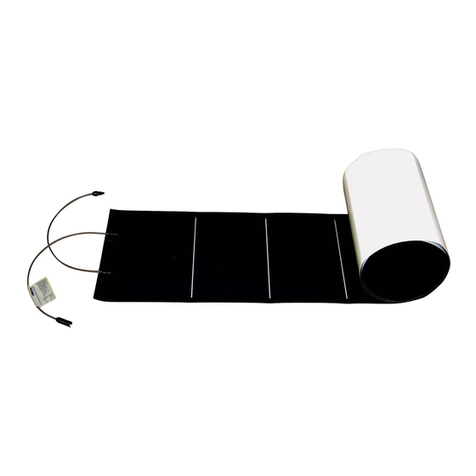
Phaesun
Phaesun PN-XFlex 83W Safety and installation manual

